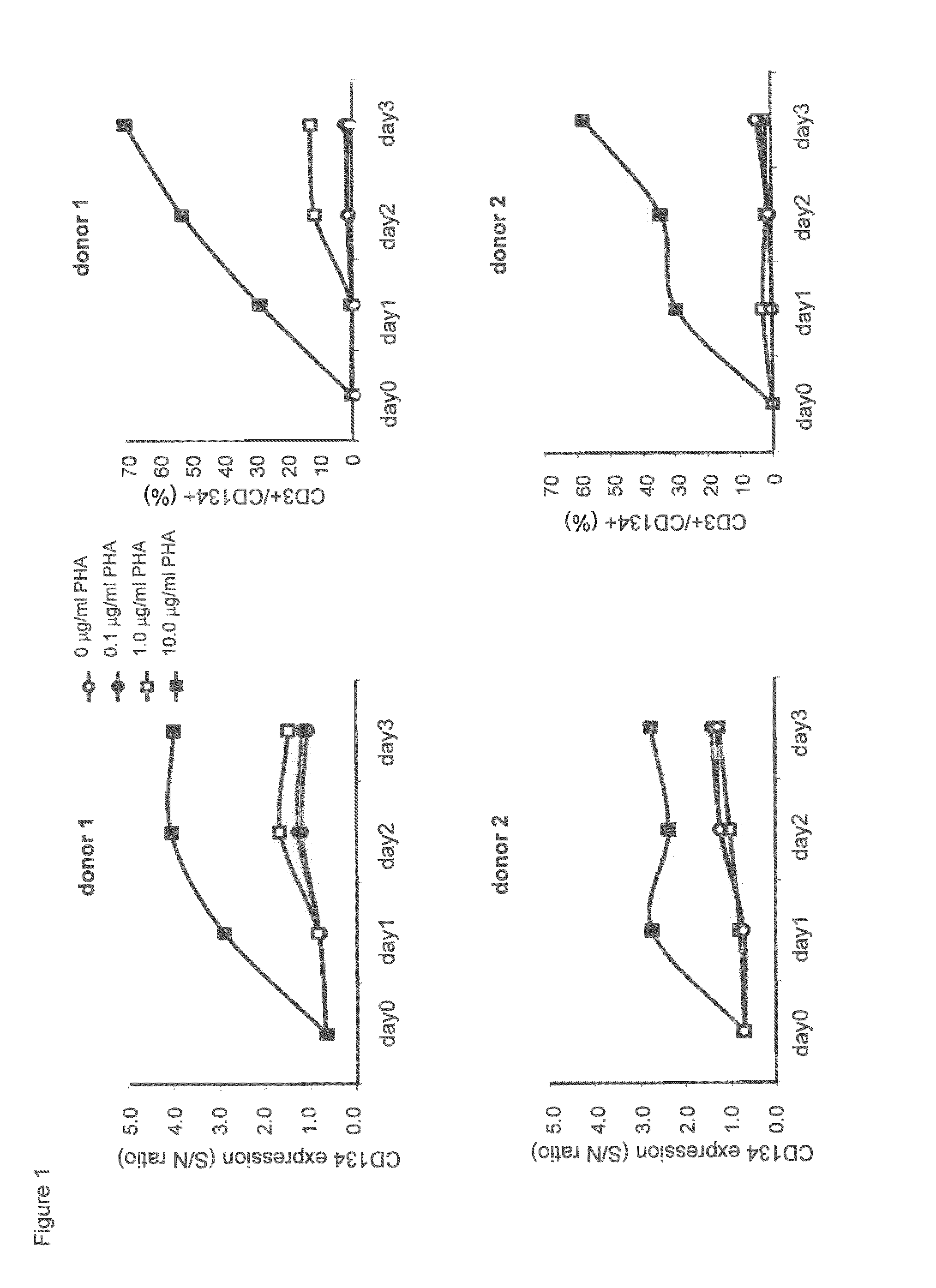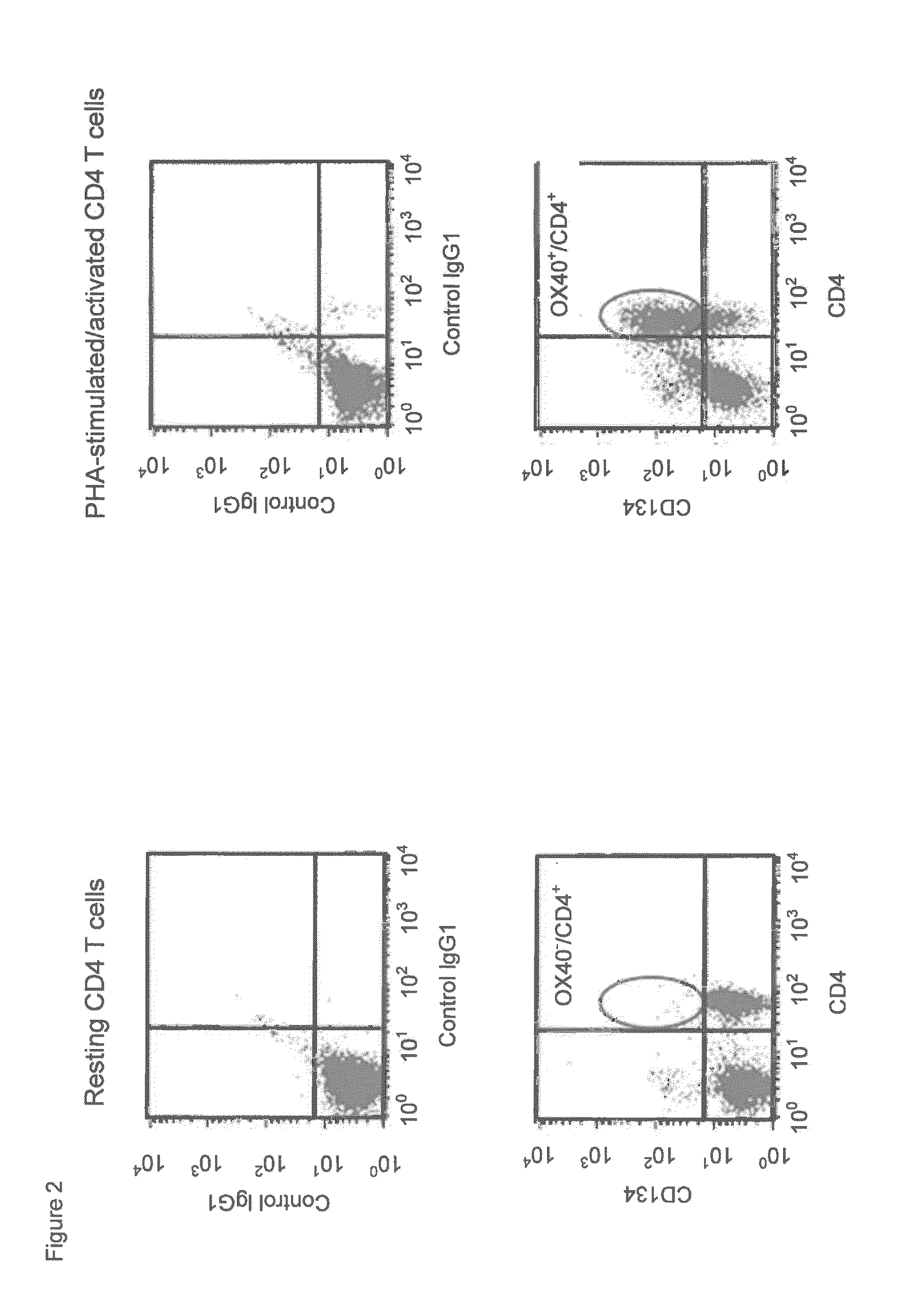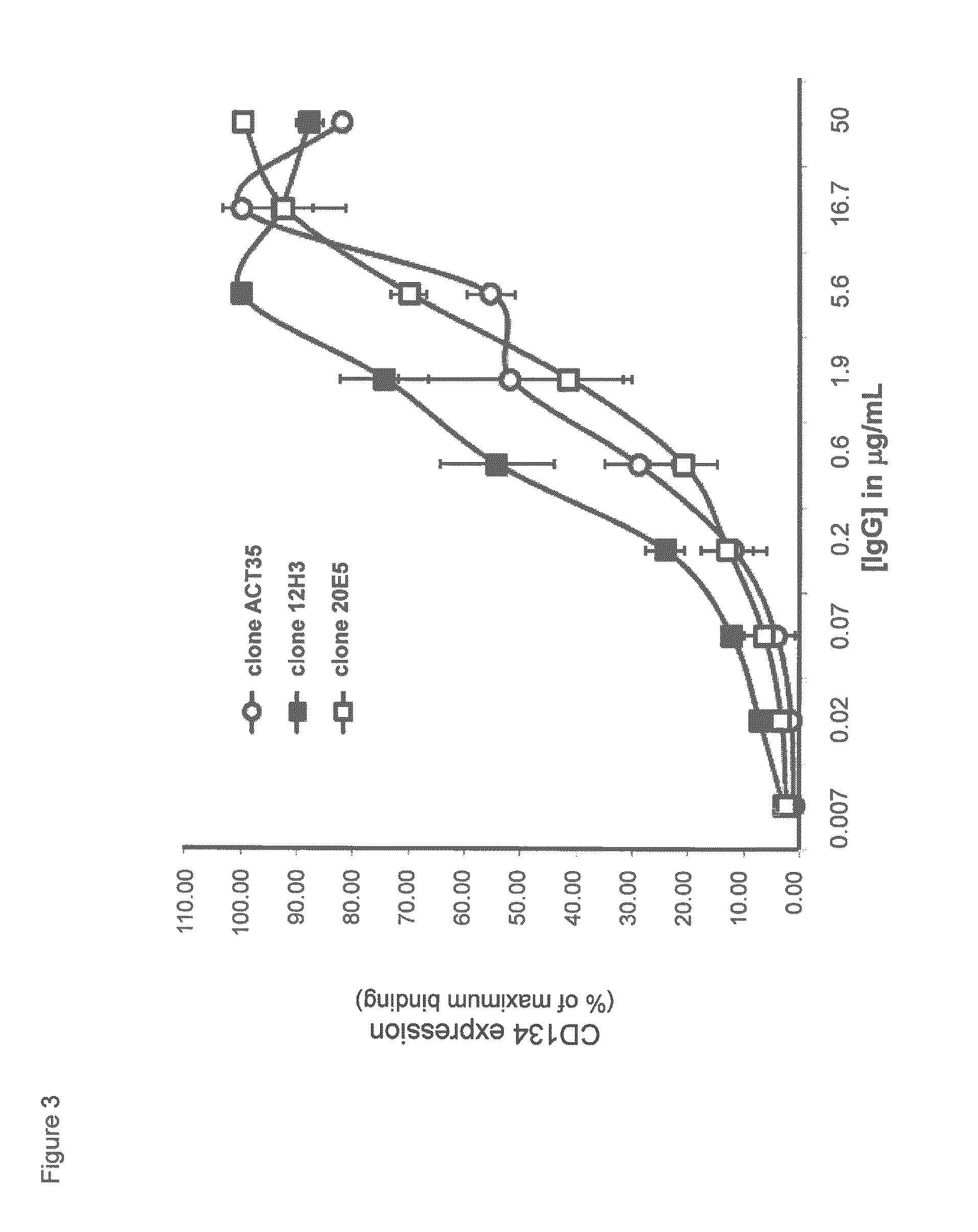Humanized Anti-cd134 (OX40) antibodies and uses thereof
a technology of humanized antibodies and anti-cd134, applied in the field of humanized antibodies, can solve the problem that ox86 cannot be expected to bind, and achieve the effect of enhancing an immune respons
- Summary
- Abstract
- Description
- Claims
- Application Information
AI Technical Summary
Benefits of technology
Problems solved by technology
Method used
Image
Examples
example 1
Generation of Mouse Anti-Human CD134 (=OX40) Monoclonal Antibodies
(a). Generation of Sf9 Insect Cells Expressing Surface CD134
[0493]cDNA encoding for human CD134 protein (GenBank ref CAB96543.1; see SEQ ID NO:1) was optimized for Sf9 insect cell (Spodotera frugiperda) expression and synthesized by GENEART, Regensburg, Germany (see SEQ ID NO: 2; cat. no. 0904551 (BC internal code V076)). This cDNA was subcloned in baculovirus transfer plasmid pVL1393 (BD transfection kit cat no. 560129; BD Biosciences). Subsequently, Sf9 insect cells (ATCC) were co-transfected with transfer plasmid pVL1393 containing cDNA encoding human CD134 together with BaculoGold Baculovirus DNA (BD transfection kit), and then incubated at 27° C. for 4-5 days. After this co-transfection step, supernatant was collected and stored at 4° C., and used to infect more Sf9 insect cells for virus amplification. For this purpose, Sf9 insect cells were transfected with amplified recombinant baculovirus, and then incubated ...
example 2
Flow Cytometric Characterization of Mouse Anti-Human CD134 Monoclonal Antibodies Clones 12H3 and 20E5
(a). CD134 Expression on PHA-Stimulated Human T Lymphocytes
[0495]Human peripheral blood mononuclear cells (PBMC) from healthy donors (informed consent) were isolated by density centrifugation on Lymphoprep (1.077 g / mL; Nycomed). Subsequently, 1-2×106 PBMC / mL in RPMI-1640 culture medium (Gibco) containing 10% fetal calf serum (Bodinco) and 50 μg / mL gentamycin (Gibco) were stimulated with 0, 0.1, 1.0 or 10.0 μg / mL phytohemagglutinin-M (PHA-M; Roche) at 37° C. / 5% CO2 for 1-3 days. After culture, PBMC were harvested and put at 1-2×106 cells / mL in ice-chilled phosphate-buffered saline containing 0.1% bovine serum albumin (Sigma) / 0.05% NaN3 (PBS / BSA / NaN3) supplemented with 10% human pooled serum (HPS; blocking Fcγ receptors; BioWhittaker). Cells were incubated with 10 μg / mL commercially available mouse anti-human CD134 antibody clone ACT35 (mouse IgG1 isotype; BD Biosciences, Alphen aan de...
example 3
Biological Characterization of Mouse Anti-Human CD134 Monoclonal Antibodies Clones 12H3 and 20E5
[0510](a). Proliferation of PHA-Stimulated Human CD134 Expressing T Lymphocytes after Treatment with Mouse Anti-Human CD134 Antibodies Clones 12H3 and 20E5
[0511]PHA-stimulated (at 0 and 10 μg / mL for 1 day; see above) human CD134 expressing T lymphocytes were generated. Cells were harvested and suspended at 2×106 cells / mL in RPMI culture medium (Gibco) containing 10% fetal calf serum (Bodinco) and 50 μg / mL gentamycin (Gibco). Cells were seeded at 0.1×106 cells / 100 μL / well (i.e., 1×106 cells / mL) in 96-wells flat-bottom plates (Corning), and were exposed to 0, 0.025, 0.25, 2.5, or 25.0 μg / mL mouse anti-human CD134 monoclonal antibody clone 12H3 or mouse anti-human CD134 monoclonal antibody clone 20E5, or / and in combination with 0, 0.01, 0.1, or 1.0 μg / mL polyhistidine-tagged recombinant human OX40L (in the presence of 1:5 molar ratio mouse anti-polyhistidine antibody; R&D Systems) at 37° C. / ...
PUM
| Property | Measurement | Unit |
|---|---|---|
| molecular weight | aaaaa | aaaaa |
| concentrations | aaaaa | aaaaa |
| concentrations | aaaaa | aaaaa |
Abstract
Description
Claims
Application Information
 Login to View More
Login to View More - R&D
- Intellectual Property
- Life Sciences
- Materials
- Tech Scout
- Unparalleled Data Quality
- Higher Quality Content
- 60% Fewer Hallucinations
Browse by: Latest US Patents, China's latest patents, Technical Efficacy Thesaurus, Application Domain, Technology Topic, Popular Technical Reports.
© 2025 PatSnap. All rights reserved.Legal|Privacy policy|Modern Slavery Act Transparency Statement|Sitemap|About US| Contact US: help@patsnap.com



